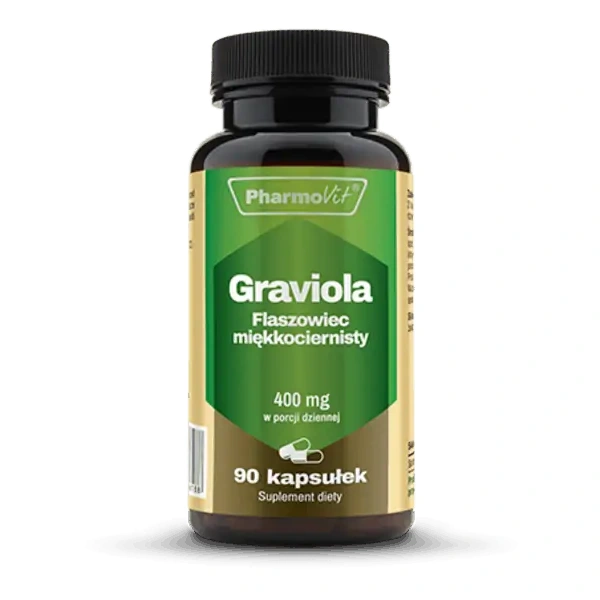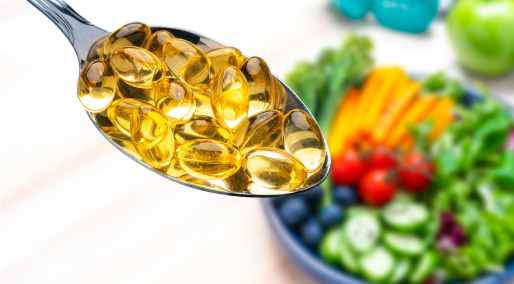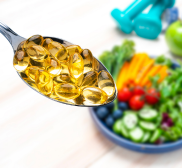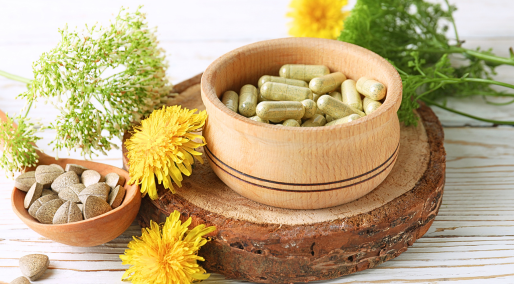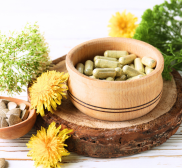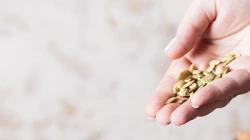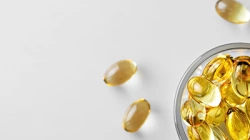- For the home
Health
- Bones and Joints
- Digestion and Healthy GI
- Essential Oils
- Fish Oil / Omega-3
- Healthy Sleep
- Heart and Cardiovascular System
- Immunity
- Liver
- MCT Oil
- Men
- Mind and Focus
- Minerals
- Pet Supplements
- Pro-Health Supplements
- Probiotics
- Senior
- Superfoods
- Urinary Tract
- Vitamins
- Vitamins for hair
- Vitamins for nails
- Vitamins for the skin
- Weight Management
- Woman
Healthy Diet
Herbs
Mother and Baby
Sport
Your Goal
Pet Supplements
Cosmetics
- Cosmetics for children
- Men's Cosmetics
- Unisex Cosmetics
- Women's Cosmetics
- Dezodoranty i perfumy
- Higiena jamy ustnej
- Kosmetyki akcesoria
- Kosmetyki dla dzieci2
- Kosmetyki do ciała
- Kosmetyki do higieny intymnej
- Kosmetyki do opalania
- Kosmetyki do pielęgnacji ust
- Kosmetyki do twarzy
- Kosmetyki do włosów
- Papier toaletowy / chusteczki
PHARMOVIT Graviola 400mg - 90 capsules
Available: 0 szt.
8,06 €
Price per portion: 0,18 €
Temporarily unavailable
After purchase you will receive 33 pts
Product Details
- Description
- Dosage
- Ingredients Table
- About the brand
- Nutritional information
- Reviews (0)
- Articles
Graviola - how to enrich your diet
The Graviola tree (Annona muricata), also known as guanabana, occurs in tropical regions of the world, especially in South America. It is grown primarily in Mexico and the Caribbean, but we can also find crops in Brazil, Colombia as well as in the northern regions of Argentina. Due to the place of cultivation, the plant grows year-round and its fruits ripen every month. It is a small tree that reaches a maximum of 7-10 meters. They are characterized primarily by greenery, with large alternate leaves, which have an unusual, not to say unpleasant, smell. The leaves are smooth, oblong, on both sides sharp-tipped, 6-20 cm long and 2.5-6 cm wide. Fruits reach up to 6 kilograms, and their flesh is white and has extending strands of sensitive tissue along with black seeds, whose length is no more than 2 cm. Tasting this juicy and sweet-sour fruit, you can feel the taste of pineapple, i.e. a herbaceous plant of the bromeliaceae family, and wild strawberry or strawberries i.e. the kind of perennials of the rosacea type occurring in Poland. Its cultivation is done by the inhabitants of south-east Asia. The leaves have a long history of use by traditional herbalists. Due to the rich properties of soft-fleshed tea, it is used both in gastronomy and in medicine. This fruit is used in the preparation of all kinds of multifruit drinks, it is also added to desserts or fruit salads. In medicine, it is used due to antibacterial and antiulcer properties, including in natural medicine of Latin American countries graviola has been used as an anti-parasite, for diarrhea, fever, liver disease, rheumatism, sedation, lowering of blood pressure and many other ailments.
For example, in Peru, they first burn graviola leaves, and then use it to treat inflammation of the mucous membrane, as well as to get rid of mucus from the throat. In the Caribbean they prepare graviola tea from the leaves to help fight flu and asthma, while in some parts of South America, the juice obtained from graviola is used to fight dysentery and scurvy, while the roots of the plant are used as sedatives. It can be said easily that every country has their own customs.
The rich properties of graviola has caught the attention of scientists who began to carry out research already in the 1940s. It was found that graviola has anti-inflammatory, analgesic properties, prevents ulcers, lowers blood sugar and pressure and fights viruses.
The breakthrough turned out to be the fact, when it was shown that the ingredients contained in graviola can fight cancer cells. Scientific research suggests that Acetogenins, the active ingredients of Graviola, may support the normal growth and functioning of cells, because they are, ie, annonace acetogenins, effectively eliminate disease cells, and most importantly, do not negatively affect the healthy cells. Acetogenins can be found in plants from the group Annonaceae, i.e. plants belonging to the angiosperm family, whose representative is, i.e., graviola. This action results from the fact that these compounds, i.e. acetogenins, inhibit enzymatic processes occurring in the cell membranes of only cancer cells, thus not violating the healthy cells of the body, which occurs when chemotherapy is used while using synthetic preparations.The graviola extracts are poisonous towards, among others, cell lines of lung cancer, breast cancer, prostate adenocarcinoma, pancreatic cancer, colon adenocarcinoma, liver cancer, ovarian cancer, cervical cancer, breast cancer, bladder cancer and skin cancer cell lines.
Graviola, has antiparasitic, antibacterial and insecticidal properties, because it has many vitamins that support the immune system in everyday functioning and thus protect against diseases, in particular containing, among others, vitamin A, vitamins from the B group, vitamins C, K, E and folic acid (vitamin B9), as well as important for the body minerals, such as: phosphorus, iron, magnesium, zinc, sodium and calcium, which in turn makes graviola to have anti-inflammatory properties. First of all, it is used in particular in the treatment of:
- bacterial and fungal infections;
- arthritic problems;
- liver problems;
- pain with joints;
- cutaneous infections;
- internal parasites;
- depressive states;
- during diarrhea and during fever.
One of the next positive aspects of using graviola is "fight" with diabetes. The extract from the leaves lowers the glucose levels, but also protects the insulin-producing beta cells of the pancreas, which has been proven in patients (only in rat studies), in healthy individuals no such effects were observed. Graviola supports the relief of inflammation and pain, because fruit extracts have an inhibitory effect on COX and COX-2 enzymes responsible for the synthesis of relays that activate pain receptors.
Juices are the most often graviola ingredient found in industry. They should be drunk in doses of 50-100 ml to twice a day on an empty stomach. In addition to juices, we can meet graviola in the form of tablets or capsules. It should be noted that graviola is in principle treated as a supplement, not as a medicine, and so it is used to supplement the diet.
Side effects of graviola - everything has its pros and cons
Despite many positive aspects and related properties, it is strongly inadvisable that graviola is consumed by people taking medications aimed at reducing blood pressure, pregnant women as well as breastfeeding mothers and it is important that graviola should not be combined with other supplements such as Coenzyme Q10. In addition, it should be kept in mind that when creating a diet plan for yourself and including in it graviola, do not forget about replenishing the bacterial flora, because long-term consumption of it can lead to sterilization of the digestive system. It should be remembered that as with any product, you need to be wise, because using excessive amounts will not improve our health and will even have the opposite effect. Symptoms of graviola overdose include nausea, vomiting, diarrhea, as well as headaches. Detailed instructions on the dosage of the supplement should appear on the packaging of the supplement or inside it, so it is necessary to always read the contents before use.
It should also be mentioned that in connection with the allegations directed against graviola extracts, in particular their highly harmful effects on nerve cells and the fact that they can cause Parkinson's disease, a number of studies have been carried out, which clearly did not state that there was a direct cause-and-effect relationship to nerve cell damage or Parkinson's disease, so this plant bears the hallmarks of a safe supplement, however, it is worth emphasizing that internal use of products made from its seeds is not recommended, as in rats, It was noticed that when using a dose exceeding 300 mg / kg, there are intestinal problems, as well as reluctance to explore the world. Extracts from graviola reduce blood pressure, so people taking medications for hypertension are required to supervise their pressure levels. With other side effects, it can be concluded that overdose of gravioli may increase the effect of antidepressants and sedatives.
Dosage
Take 2 capsules once a day during a meal. Drink with water (250 ml).
Serving Size: 2 capsules
Servings per Container: 45
Form: Capsule
Other ingredients
capsule shell: gelatin
Cannot be used as a substitute of a healthy and balanced diet.
Not to be used by pregnant or nursing women.
Do not exceed recommended dosage per day.
Keep out of reach of children.
Best before: date on the package
All descriptions are the property of the www.mass-zone.eu. Copying or distribution is strictly prohibited! As per the Copyright Act from February 4th, 1994.
Manufacturer: Pharmovit Sp. z o.o., Sp. komandytowa, Plac Gabriela Narutowicza 1/6 09-402, Plock, Poland
No one has written a review for this product yet. Be the first to write a review.
